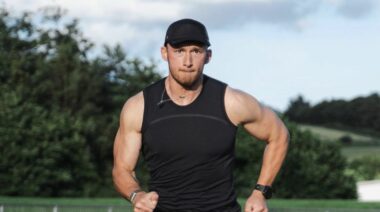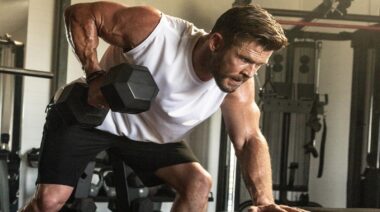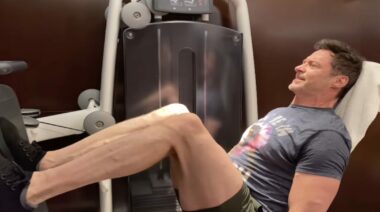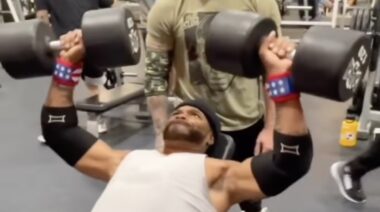If the definition of insanity is doing the same thing over and over and expecting a different result, then there’s a whole lot of crazy going on out there in sport and the health and fitness industry. If we were to look at the progress of a lot of athletes and gym-goers we would see fast gains, injury, a big lay off, then rinse and repeat.
If the definition of insanity is doing the same thing over and over and expecting a different result, then there’s a whole lot of crazy going on out there in sport and the health and fitness industry. If we were to look at the progress of a lot of athletes and gym-goers we would see fast gains, injury, a big lay off, then rinse and repeat.
I was fortunate to be one of the first Aussies to do the Functional Movement Screen back in 2010 with Gray Cook. At the time, the workshop was called the Certified Kettlebell-Functional Movement Screen (CK-FMS), which was a course for qualified RKC’s. I learned that the biggest predictor of injury is previous injury followed by asymmetry, a lack of neuromuscular balance and control, a higher BMI, and—wait for it—stupidity.
It occurred to me that a lot of our rehabilitation, physiotherapy, and strategies to come back to sport, exercise, and training aren’t very successful. The reasons why are complex and multi-factorial, and certainly not only physical. In my experience, those with a positive mental attitude (PMA), not only rebound from injuries, but they also rebound faster.
Let’s face it when we have a layoff we just want to get back into things. It seems to me that all too often physical therapists and coaches are pressured to get an athlete back to their sport or training as soon as possible. But by rushing this process the athlete gets set up for failure. Getting athletes back to where they were prior to injury just isn’t good enough and this thinking is flawed. We must work to get our athletes (or ourselves) back to an even better place than where they were pre-injury—both mentally and physically.
Get to the Root
Make sure you get to the root cause of the problem and fix it—don’t just address the site of the pain. This is because the absence of pain does not mean that you are ready to get back into the swing of things. It just means you aren’t in pain anymore, and that’s it. If the injury wasn’t a contact injury, then you need to evaluate things that may have contributed to the injury, even if it isn’t obvious.
Really investigate the postural strain (poor posture) when sitting, standing, and lying during regular day to day activities. What does the technique in the gym look like? Is there unbalanced programming, poor exercise selection, repetitive movements, an overload of areas, gaping asymmetries? What about a lack of mobility, stability, or strength? Perhaps stress or poor recovery strategies are involved and combined with a lack of sleep. Maybe it’s a problem with alignment? For example, a shoulder problem could actually be a neck problem in disguise or perhaps a hip problem is causing knee misalignment.
Schedule an appointment with a professional and also self-assess. If you don’t get to the root cause of why you are injured and fix it, welcome to the hamster wheel of fast gains, injury, and recovery with a side dish of zero long-term progress. Many of us build our training around our strengths when in reality we need to build it around our weaknesses. You must treat your injury as an opportunity to learn.
Be the Tortoise
I get it. You are super excited about getting back to training. There is no pain. You have been given the all clear by your doc or health professional. But it is a crazy idea to pick it up exactly where you left off. While it may be tough on the ego to do a less sophisticated exercise, or put less weight on the bar, spar as hard, or roll and tap earlier, you absolutely must—even if you don’t feel pain.
Try working on areas of your game you wouldn’t have usually considered. Whatever it is, you need to see regression as a way forward instead of a way back. Regressing to progress is the sign of a professional rather than an amateur. Understand that rebuilding slowly is a better option than going too hard out of the gates then ending up back on the sidelines again. Just because you feel that you can, doesn’t mean that you should. Everybody wants to be the hare, not the tortoise. Be the tortoise; remember you are playing the long game. Remind yourself you want to be in this for years, not weeks.
Pursue Self-Care and Maintenance
Re-training movement and recruitment patterns, remodeling tissue, fixing alignment, removing asymmetries, improving mobility, working stabilizers, or improving strength deficits all take time—a lot of time. Spending a few weeks following a strategy to get back to your sport or training then casting it aside once the pain disappears will get you a return ticket to your injury. Again, the absence of pain does not mean that you are out of the jungle. Get help from your osteopath or chiropractor, and update your rehab program from your coach or physio to one that is preventative. Balance what you do in your sport.
Increase Your Emotional IQ
An often missing component in returning from injury is the psychological component. Playing sport and training effect us mentally in so many ways. If you have been training or have been a serious athlete for long, then you will soon come to see yourself defined in terms of your sport—it’s who you are and what you do. With your long-term investment and commitment of time, energy, money, and pain over the years, your training has become an integral part of who you are. It’s how you see yourself and how others see you. It is also a major source of self-esteem and provides you with a continual source of positive reinforcement and feedback.
There is enjoyment and self-satisfaction in mastering new skills, overcoming challenging obstacles, and progressively getting better. Having a great bout, game or race feels fantastic and provides feedback that your hard work is paying off, especially when there is external validation coming your way. We also all know that it is a great way to deal with stress. Many trainees discover that their involvement in their practice is a constructive way to escape from the stress of family and work-related problems. Their sport offers them a safe and constructive way to channel their frustrations and aggression. Along these same lines, your sport can provide you as an athlete with a vehicle to a better life, which has been especially so for a number of the fighters I have trained. So, what happens psychologically when all this comes to a grinding halt due to injury?
If you want to speed up the rehab process as much as possible, then you need to expect certain feelings and behaviors to emerge as a result of your injury, especially if it serious or career ending. These feelings and behaviors are absolutely okay and normal. With any kinds of loss, the athlete may go through a number of stages directly related to mourning. Some professionals feel that these stages parallel Kubler-Ross’s five stages of death and dying: denial, anger, bargaining, depression, acceptance.
Many athletes first meet their injury with outright denial. They may downplay or ignore the seriousness of the injury, falsely believing that everything’s alright. They may continue to train through the injury which only makes things worse (and them very angry). The athlete may adopt a “why me” attitude and act hostile and resentful to coaches, teammates, etc. At some point in the process, depression may set in as the athlete comes to directly realize the nature and seriousness of the injury. At the end of this stage, the athlete finally comes to accept the situation and hopefully makes the best of it.
So what is the best way to handle things so that the mental anguish is minimized? You should allow yourself to be sad or feel whatever loss you are experiencing. Burying or hiding your feelings in this situation may interfere with effective coping and recovery. Your emotions are an important part of the healing process. Feeling is part of healing. Spending too much time and energy on the past or the future will take away from you successfully moving through the recovery process. Yes, your injury has sidetracked you. Unfortunately, this is your reality right now and you have to allow yourself to deal with it.
As difficult as this all will be, try to stay as positive as possible. Your attitude and outlook is absolutely everything. When positive, your attitude can speed up the healing process and lessen the emotional pain that you have to go through. It’s all up to you and the quality of your thinking. Monitor your internal dialogue, self-talk, and your internal storytelling.
You must continue to practice or train. If your injury allows you to still continue any part of your training, do so. Try some cross-training. If you are unable to practice physically, instead practice mentally. Use mental rehearsal on a daily basis to see, hear, and feel yourself performing in your practice, executing flawlessly and with perfect timing. Take this time to also mentally work on your weaknesses. You might even want to show up for some of the regular training and mentally rehearse what the team is doing while they’re working out. Regular mental rehearsal of your skills will keep the neuromuscular connections activated so that when you are able to actually begin physical practice, you will not have lost as much.
I used mental training on my first Expert Level 1 test for Krav Maga in Israel. On day two of the camp, I landed on some unsteady ground after kicking in a forest in Haifa and was sidelined for the remainder of the camp until testing day. I trained mentally for the days leading up to the test and kept on a steady diet of pain killers and anti-inflammatories. On testing day, I went on to not only successfully test, but topped the testing with a colleague of mine from KMG Switzerland.
The worst thing for you to do when you’re in a vulnerable state is to separate yourself from your group. Make a serious effort to reach out rather than pull in. And if you are really depressed for an extended period of time, have lost interest in things that used to excite you, have noticed that your sleep and eating patterns have changed, and/or you are having self-harming thoughts, seek professional help immediately. Seeking out the help of a professional therapist or counselor is not a sign of weakness—on the contrary, it’s a sign of strength.
Give Yourself Room to Rehab
If you’re a serious trainee and have ever had an experience with an injury, then you know that the physical hurt you feel is only a small part of the overall discomfort that you have to go through during the rehab process. Some people will have their first serious injury and never rebound back. It is imperative that as coaches, health professionals, trainers, and teammates that we address the mental component of rehab with our athletes while closely monitoring the physical component, especially when it comes to serious injury or injuries that end careers. Regardless if you are the one injured, just remember you’ve got this.






